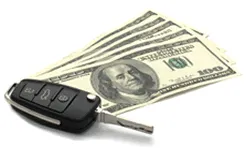Contact Us
office@taxsherpa.com
(678) 944-8367
Follow Us:
Our Blogs
On our blogs you will find our Tax Sherpa Stories series as well as additional posts covering all manner of tax topics. Some items are timely as there are multiple tax filing dates throughout the year and some items are important larger concepts.

Navigating the Clean Vehicle Credit for 2023 and Beyond
With the introduction of the revamped Clean Vehicle Credit under the Inflation Reduction Act, there's a renewed buzz around electric and fuel cell vehicles. This credit offers substantial tax incentives for those considering a switch to cleaner transportation. However, navigating the specifics can be a bit daunting. Here's a quick breakdown:
New vs. Used Vehicles: There are now two different credits, one for new vehicle purchases and one for used vehicle purchases. Both are claimed on the new version of Form 8936.
For new vehicles, the credit is the lesser of the maximum credit assigned to that vehicle (either $7,500 or $3,750) or your tax liability.
For used vehicles, the credit is the lesser of $4,000, 30% of the vehicle purchase price, or your tax liability.Income Limitations: High earners, beware! The credit begins to phase out for individuals with modified adjusted gross incomes above certain thresholds. It's not just about buying the car; your overall income plays a pivotal role in determining if you can benefit.
Married Couples Filing Jointly: $300,000
Heads of Households: $225,000
All Other Filers: $150,000
Strategy Tip: You can use your modified adjusted gross income (AGI) from the year you take delivery of the vehicle or the year before, whichever is less. If your modified AGI is below the threshold in one of the two years, you can claim the credit.
Tax Liability Limitations: The credit directly reduces your tax bill, but there's a catch. If your tax liability is low, you might not be able to utilize the full credit amount. For instance, if you're eligible for a $7,500 credit but only owe $5,000 in taxes, you'll only benefit from a $5,000 reduction.
No Rollover: Unlike some credits, the Clean Vehicle Credit doesn't roll over to future years. This means you need to use it in the year you become eligible or lose it. This is a critical difference from most credits.
To simplify your search, we've compiled a comprehensive list of all qualifying vehicles for the Clean Vehicle Credit, detailing the make, model, year, and maximum credit amount. Dive in to find the perfect eco-friendly ride that aligns with your tax benefits!
All data is from fueleconomy.gov as of October 24, 2023.
Frequently Asked Questions
Q:
What's the difference between tax advisory and just filing my taxes?
Filing your taxes each year is a necessary task, but it is always backwards looking. Tax advisory works with you throughout the year to make sure that you are on the right track when it comes to your taxes and have strategies in place to save money now.
Q:
I've heard about tax write-offs for small businesses. What exactly can I write off, and how does it benefit my business?
Tax write-offs, also known as tax deductions, are expenses that a business incurs that can be subtracted from its revenue to reduce the amount of taxable income. Common write-offs include office supplies, mileage, rent for a business location, and advertising expenses, among many others. By writing off legitimate business expenses, you can significantly reduce your taxable income, which can lead to a lower tax bill. It's essential, however, to maintain proper records and ensure that the expenses are truly business-related.
Q:
What's the difference between a tax deduction and a tax credit?
A tax deduction reduces the amount of your income that is subject to taxation, which in turn can lower your tax liability. Common deductions include expenses like mortgage interest, student loan interest, and business expenses. A tax credit, on the other hand, is a direct reduction of your tax bill. This means if you owe $1,000 in taxes and have a $200 tax credit, your tax due would be reduced to $800. Some popular credits include the Child Tax Credit, the Earned Income Tax Credit, and credits for energy-efficient home improvements.
Q:
I'm thinking of hiring an independent contractor instead of an employee. Are there different tax implications for each?
Yes, there are significant tax differences between hiring an employee and an independent contractor. When you hire an employee, you're responsible for withholding federal and possibly state income taxes, Social Security, and Medicare taxes from their paychecks. You also typically pay unemployment taxes on wages paid to employees. Independent contractors, on the other hand, are responsible for their own taxes. As a business owner, you'd provide them with a Form 1099-NEC (if you pay them $600 or more during the year) instead of a W-2, and they would be responsible for their own self-employment taxes. It's important to correctly classify your workers, as misclassifying can lead to penalties.
Get in touch with us
Have questions? Use the form here and one of our knowledgable staff will get back to you as soon as possible.
(678) 944-8367
office@taxsherpa.com
2302 Parklake Dr NE Ste 675
Monday - Friday, 10:00 am - 5:00 pm
Send us a message

Follow Us
Follow Us
Disclaimer: The content presented on this website is intended for informational purposes only and is not tailored to the needs of any specific individual or entity. It should not be considered as financial, investment, or tax advice. The information provided is general in nature and does not account for individual circumstances or financial positions. Before making any financial or tax-related decisions, we strongly advise consulting with a qualified professional who can provide guidance tailored to your individual situation. All information on this site is provided in good faith, but we make no representation or warranty of any kind, express or implied, regarding the accuracy, adequacy, validity, reliability, availability, or completeness of any information on the site. Use of this site and reliance on its content is solely at your own risk.
Services
More
Contact Us
office@taxsherpa.com
(678) 944-8367
2302 Parklake Dr NE Ste 675
Atlanta, GA 30345
Monday - Friday, 10:00 am - 5:00 pm
© Copyright 2026. Online Tax Solutions Group LLC dba Tax Sherpa. All rights reserved.
